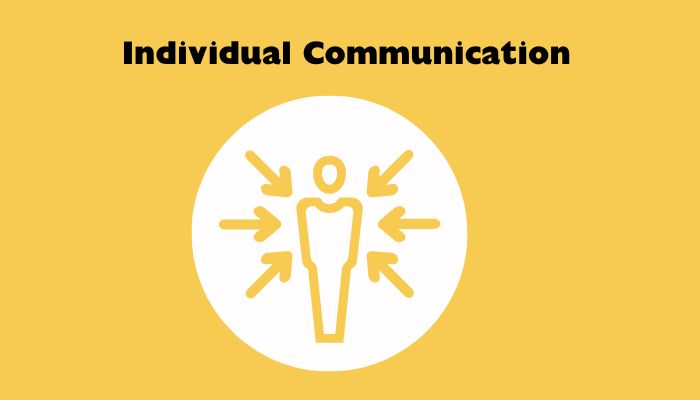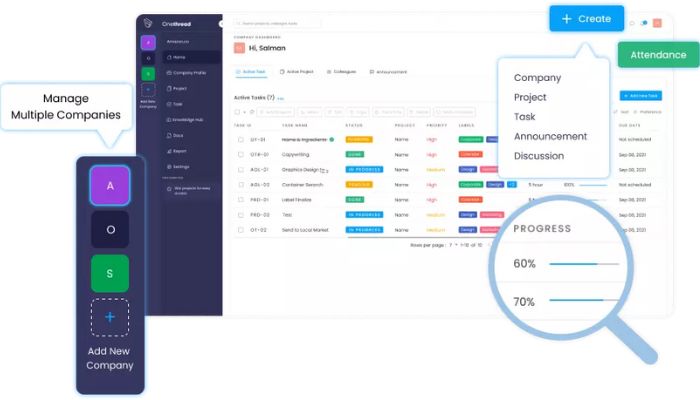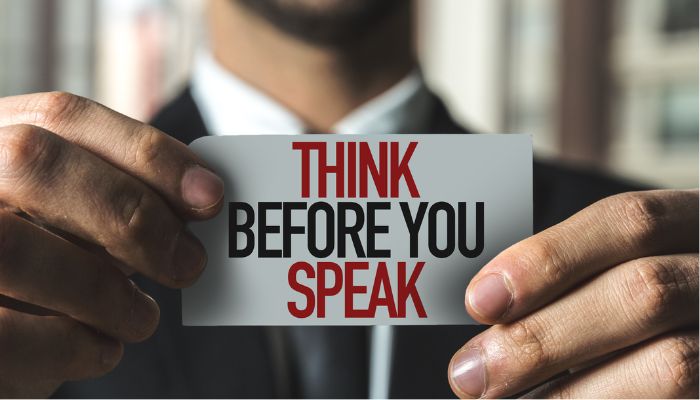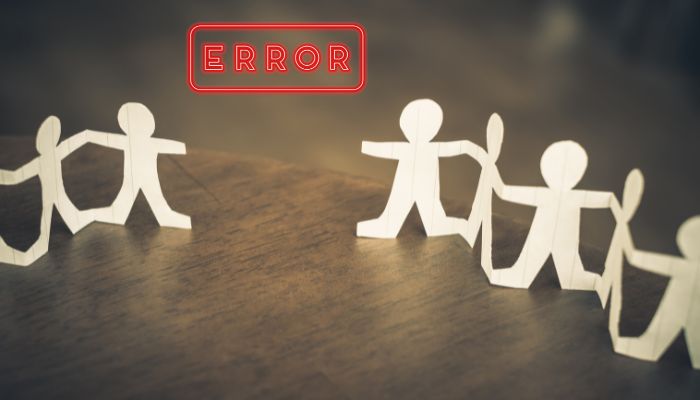Effective communication is paramount to the success of any project. And neglecting it can lead to workplace failures, as 86% of employees and executives believe. However, less than half of organizations are effective in discussing their issues truthfully.
Besides, communication allows information to flow freely, which is necessary for sales, problem-solving, and everything in between. Good communication means everyone understands each other, and the way you communicate can make your team more or less productive.
That being said, we’ll explore 12 winning communication tactics that can boost team connectivity and coordination. But before that, let’s delve deeper into communication itself.
Unveiling the Central Objective of Communication
The exchange of information between individuals is the essence of communication in any organization, where it’s essential for achieving desired outcomes.
In fact, the main goal of team communication is to share important information so that everyone can work together effectively. Besides, when team members communicate well, it’s easier to coordinate their efforts and achieve common goals.
The Four Types Of Communication
Communication encompasses various methods for exchanging information among individuals. Nonetheless, in organizational settings, the most widespread methods of communication consist of four categories —
- Verbal Cues
The most common way teams in organizations communicate is by verbal communication. It involves sharing information through spoken words or sounds. The person giving the information speaks, and the listener listens to understand the message.
To make verbal communication effective, things like tone, clear speech, word choice, and speaking speed matter. And let’s not forget the importance of good listening skills for successful verbal communication.
- Written Communication
Teams often rely on written communication to share information. It means using written words or symbols on paper or other materials. First, you create a message, and then the recipient reads and understands it.
Besides, it has a great advantage as it creates a lasting record that can be referred to multiple times. However, since readers can’t gauge the writer’s emotions or feelings, you must choose the right words and tone when writing
- Non-Verbal Cues
Non-verbal communication is all about sharing information without words. It’s like speaking with your body, face, and gestures. When you look at someone or notice how they sit and use their hands, you can understand what they’re trying to express.
However, it can sometimes cause misunderstandings unintentionally. For example, if someone doesn’t make eye contact while you’re sharing an idea, it might seem like they’re not interested or don’t agree, even if that’s not their intention.
- Visual Cues
Visual communication involves using signs like body language, and illustrations to convey messages effectively. By selecting the right visuals, you can help people understand information more easily.
In fact, visual aids are often combined with speaking and writing to enhance information comprehension in team meetings.
Strategies for Developing Strong Communication Skills in the Workplace
Teams at work use different ways to communicate, like email, video meetings, audio calls, texts, and meetings in person. But, if they don’t talk clearly about what they want to do, they might not be able to do it well. Thus, it’s important to communicate well about project goals and objectives, or they might not be able to achieve them.
As more and more projects fail, it’s really important to have good communication strategies. Well, it means thinking carefully about things like what you want to happen, what you want to say, and who you’re talking to.
Also, the length and difficulty of a communication strategy can be different depending on what you want to do and how much you want to say.
But, before starting to make a communication strategy, it’s really important to figure out what’s most important. That way you can plan the strategy better.
1.Identify and Define Your Objectives
Before making a communication strategy, it’s really important to know what you want to do. That includes figuring out what the problem is and setting goals that match what the organization wants to do overall.
And taking time to do this will help you make a better communication strategy.
By doing so, you can establish a roadmap to guide your team toward achieving your desired outcomes. So, engage everyone who should be involved to make sure they all understand and work towards the same goal.
2.Include Others in the Decision Making Process
When devising a communication strategy, it’s beneficial to involve other team members. By doing so, you can obtain diverse perspectives and insights that can contribute to the development of a more effective plan.
Moreover, involving team members can promote a sense of ownership and commitment to the strategy.
3.Resonate with Your Target Audience
To make a communication strategy that works well, you need to know who you’re talking to. Well, that means thinking about where they live, what kind of people they are, and what they think and feel. If you can understand these things and care about what the audience wants, your communication will work better for them.
4.Reach for Specific Goals
If you want to make a communication strategy that works well, you need to set clear goals that match what the organization wants to do overall. These goals should be realistic, measurable, and specific.
Thus, you can make sure that your communication efforts are strong, focused, and have a big impact.
5.Continuous Evaluation and Improvement
You should do regular evaluations to check if your communication strategy is working well. Observe how things are going and figure out what’s going well and what’s not.
Based on what you find, make changes to the strategy. By checking regularly, you can catch any problems and fix them, so you can keep going in the right direction and get things done the way you want.
Our 12 Winning Communication Tactics
Good communication is essential in teamwork because it promotes collaboration and information sharing. In fact, improving your communication skills can benefit you in both your professional and personal life.
On top of that, effective communication is a joint effort that requires the involvement of all parties to be successful.
As Anne Morrow Lindbergh articulated beautifully:
“Good communication is as stimulating as black coffee, and just as hard to sleep after.”
Let us now explore the top communication tactics that can prove to be effective in enhancing team interaction and making it an enjoyable and fulfilling experience:
1.Promote Individual Communication
Talking to your teammates individually is important for building a relationship and understanding them better. By having personal conversations, you can learn about their communication style, body language, and preferred ways of interacting. This information can help you adjust how you communicate to better meet their needs.

Also, when you need to share confidential information, it’s best to have a private conversation with someone you trust. Thus, you’ll be able to talk about things privately and get advice from one person without involving the rest of the team.
2.Encourage Every Individual to Speak at Meetings
Effective communication during team meetings is required to ensure that every team member has the opportunity to contribute to the discussion. When only a select few are given the opportunity to voice their opinions, meetings can become tedious and unproductive. Well, you can prevent it by having a structured meeting agenda ensuring that only those directly involved are present.

Regardless of whether you’re a team leader or a team member, it’s essential to express ideas openly during meetings. It’s the responsibility of the meeting organizer to create a comfortable environment where everyone feels at ease sharing their ideas.
It’s also essential for participants to actively listen to others without interrupting them. These practices can make meetings more productive and help team members enhance their communication skills.
3.Using Appropriate Channels for Effective Communication
In today’s fast-paced world, it’s crucial to stay on top of important communications. However, it can be overwhelming to keep track of messages across multiple platforms. That’s where the need for a suitable communication channel comes in. That’s why we recommend Onethread – the simplest project management tool ever – to enhance team connectivity and ensure effective communication.

Onethread serves as the central hub for all your ongoing projects, streamlining operations and management. But it doesn’t stop there! Onethread also offers robust communication features to facilitate seamless interactions. Through its chat, announcement, and mention features, you can effortlessly convey your messages to the right people within your team.
With Onethread, you can upgrade your communication game to unleash your full potential. It’s the perfect solution for keeping everyone connected and ensuring timely responses in today’s fast-paced environment.
4.Take a Chill-Pill
The negative effects of serious conversations can impact your state of mind and ability to process information effectively. You might even feel like stopping the conversation altogether, which makes it harder to get your message across.

Though it’s important to talk about heavy issues sometimes, it’s also good to keep things light and fun. That way you’ll along with your team stay focused and won’t get too worn out. Try cracking a joke every now and then to keep things chill and interesting.
5.Be Prepared
To ensure effective communication with your team, keep yourself prepared beforehand. Taking a casual approach may cause important information to be missed or misunderstood. To avoid this, you can jot down all the key points that you want to convey to your team.

In addition to this, you should aim to present the information in an interesting and engaging manner. You can do that by customizing the information to suit the specific audience you are addressing. Hence, you’ll be able to capture the attention of your audience and keep them engaged throughout the communication session.
6.Encourage Two-Way Communication
When you talk to someone, it’s not just about telling them all about your things, it’s also about hearing what they have to say. If you only talk and don’t listen, things can get disordered and you might miss chances to make things better. So, it’s really important to make sure you get feedback during your discussion.

That way, the person you’re talking to can give their thoughts, ask questions, and give you tips. You can get feedback in any type of conversation, like team meetings or just chatting with someone one-on-one.
Asking for feedback shows that you value the opinions and thoughts of others and that you’re open to constantly up your communication skills. It’ll also help to ensure that everyone is on the same page and that there are no misunderstandings.
7.Learn to Handle Tough Conversations
The most daunting task during communication is a dreaded difficult conversation. It’s part of everyday life that we encounter all the time, whether it’s with our boss, tricky coworkers, or upset customers. Even according to a recent poll published by Forbes, a whopping 80% of employees are running terrified of at least one nerve-wracking conversation at work.

When you have a tough talk, don’t just try to dodge it or get into a fight. Instead, keep cool, take your time, and listen to what the other person has to say. Before you say anything back, take a moment to think about what the other person just told you and try to see things their way.
You can also get ready for the talk by thinking about what you want to say beforehand. This can be really helpful when you need to talk to your boss or your teammates about something tough.
Here are some additional tips to help you navigate difficult conversations:
Stay focused on the issue at hand:
Avoid getting sidetracked by personal attacks or unrelated topics. Stay focused on the issue you’re discussing and work together to find a solution.
Use “I” statements instead of “you” statements:
By using “I” statements, you can express how you feel without coming across as accusatory or confrontational. For example, instead of saying “You’re not listening to me,” you could say “I feel like I’m not being heard.”
Practice active listening:
Listening is an important part of effective communication. Practice active listening by giving the other person your full attention, asking questions to clarify their position, and summarizing what they’ve said to ensure you understand.
Be respectful:
Show respect for the other person’s point of view, even if you don’t agree with it. Avoid interrupting or talking over them, and be mindful of your tone of voice and body language.
Look for common ground:
Try to find areas of agreement or common ground that can serve as a starting point for finding a resolution. By focusing on areas of agreement, you can build trust and make progress toward a solution.
8.Capturing the Key Points of a Discussion
When you talk with your team, you might talk about a lot of topics and come up with excellent ideas. However, it’s hard to remember everything you talk about, and you might forget something important later on.

To make sure you don’t miss anything valuable, it’s a good idea to write down everything that seems important during your talks. This will help you keep track of all the things you talk about and make your discussion more useful.
9.Effectively Implementing Communication Tools
In this digital time, there are a lot of cool tools you can use to talk and work with your team online. Using these tools can make it easier for you to share your ideas and talk with your team without any problems.

One of these tools is online team software that has feature like chat, video calls, and note-taking. They can help you talk in real-time so everyone stays up-to-date with what’s going on.
Another useful tool is project management software like Onethread. When it comes to task management, Onethread really shines. It has a wide range of features to help you stay on top of your tasks. You can create subtasks, attach files to tasks, assign tasks to team members, and even set priorities and statuses for each task.
With multiple views and reminders, you’ll never miss an important deadline or forget about a task again.
10. Positive Attitude and Smiling in Communication
When you talk with someone, it’s important to be positive and friendly. This can help make the conversation go well and encourage everyone to be honest and open. But if you’re negative, it can make things go bad or discourage communication altogether.

Smiling is another thing that can help make talks better. It can help people feel relaxed and comfortable ultimately making the conversation more fun. Plus, when you smile, it can actually make you and the other person feel happier and less stressed!
Furthermore, research suggests that smiling triggers the release of neurotransmitters. Now that can improve mood and reduce stress levels for both the speaker and the listener.
11.Treat Your Peers Fairly
The ability to treat anyone and everyone equally is crucial in creating a positive and inclusive environment. In any setting, whether it’s the workplace or personal relationships, it’s important to treat people with respect and fairness, regardless of their background or status.

Failing to treat everyone equally can lead to feelings of resentment, discrimination, and exclusion. By embracing diversity and treating everyone with the same level of respect and fairness, we can build strong and harmonious relationships, foster creativity and innovation, and ultimately create a better and more equitable world.
12. Think Before You Speak
Before you say anything, it’s important to think about what you’re going to say. Sometimes, we just say stuff without really thinking about it, and that can cause problems. If you’re not careful, you could hurt someone’s feelings or make a big mistake.

That’s why it’s important to take a moment to think about what you’re going to say. Ask yourself if your words might upset someone or if they’ll help the situation. If you think before you speak, you can have better talks and keep your relationships strong. Just remember that once you say something, you can’t take it back, so be careful!
Common Communication Errors to Keep Away From
To make sure you get your message across, you want to avoid some common communication blunders that can get in the way. These blunders can make things confusing, and a lack of productivity in the workplace.

Therefore, it’s essential to be aware of the following common communication blunders:
1.Measuring All On the Same Scale
When you’re talking to your team, it’s easy to assume that everyone gets what you’re saying in the same way. But that’s not always the case! People learn and understand things in different ways, which can lead to misunderstandings.
To prevent this, it’s important to remember that not everyone will understand things in the same way. In fact, you need to make sure you explain things in a way that everyone can understand. This way, you can make sure that everyone is on the same page.
2.You are a Terrible Listener
Good communication means not only speaking but also listening. In a conversation, one person speaks, while the other listens and interprets what’s being said. So, you must understand that listening is as important as speaking when it comes to effective communication.
Active listening enables you to comprehend information easily and facilitates learning. In contrast, poor listening skills can lead to misunderstandings and incorrect interpretations of information. Hence, try to be a good listener for effective communication.
It’ll help to grasp the general idea from conversations as well as in building strong relationships based on mutual understanding and trust.
3.The Importance of Tone Check
Your tone of voice has the power to affect your listeners significantly. If you speak in an unfriendly or aggressive tone, it can make others feel uncomfortable and even lead to arguments. So, it’d best to use a gentle and confident tone that shows you’re open to listening and sharing information.
By being mindful of your tone, you can enhance the effectiveness of your communication and establish a positive rapport with your audience.
4.Letting Emotions Overpower Logic
Allowing your emotions to dominate during a conversation can lead to unproductive results, especially in a workplace setting. It’s important to prioritize logical thinking and set aside any emotional impulses. Decisions made based solely on emotions often lead to regrettable outcomes.
Even though it may be challenging, it’s crucial to prevent emotions from overpowering logical reasoning. By doing so, you can ensure that your conversations remain effective and yield positive outcomes.
5.Not Voicing Your Opinions
To ensure effective communication, it’s essential to share thoughts and ideas while conversing with others. Failing to do so may lead to unproductive conversations.
Expressing your thoughts and opinions can help to bring attention to your concerns and requests. Confidence in communicating your ideas is needed to ensure that others take them seriously.
6.The Art of Reacting & Responding
When communicating, it’s crucial to respond instead of react. Reacting hastily can lead to aggressive behavior and poor decisions, which can be detrimental to your professional relationships.
To avoid such a situation, take some time to think and reflect on the matter before taking action. Responding means considering the possible consequences and thinking about how your words will impact the conversation.
By responding calmly and thoughtfully, you can create a positive and productive communication environment.
7.Letting Distractions Overrule You
During any communication, you need to stay focused and avoid getting distracted. And distractions can be anything from outside noise, inner thoughts, or anything that takes away your attention from the conversation. Additionally, inattentiveness can lead to misunderstandings and misinterpretations.
To ensure successful communication, you must maintain focus and give undivided attention to the person or group you’re communicating with. There are various techniques that can help you stay focused, such as removing distractions, practicing active listening, and maintaining eye contact.
8.Not Being Open to Alternate Ideas
One of the common mistakes in communication is not having an open mind, which can result in closing oneself off from others. The emergence of social media has intensified the “echo chamber” phenomenon. It’s a state where our personal standpoints are reinforced and amplified by the platform, leading to a lack of exposure to opposing views.
Even, sometimes we only hang out with people who think the same as us. This happens in the workplace too, where people with different ideas tend to avoid each other.
To make a happy and fair workplace, you need to accept everyone’s differences and be open-minded. When you appreciate and respect your colleagues’ dissimilarities, it’ll make the team better and help individuals to grow as well.
Conclusion
To get ahead in your career, you need to know how to communicate effectively. No matter who you’re talking to – your boss or your colleagues, using smart communication techniques can make a big difference.
That being said, you can follow our 12 winning communication tactics for great communication. You should also watch out for common communication errors that can mess things up and ruin your conversations. By steering clear of these mistakes, you’ll be able to communicate better and achieve better outcomes.
